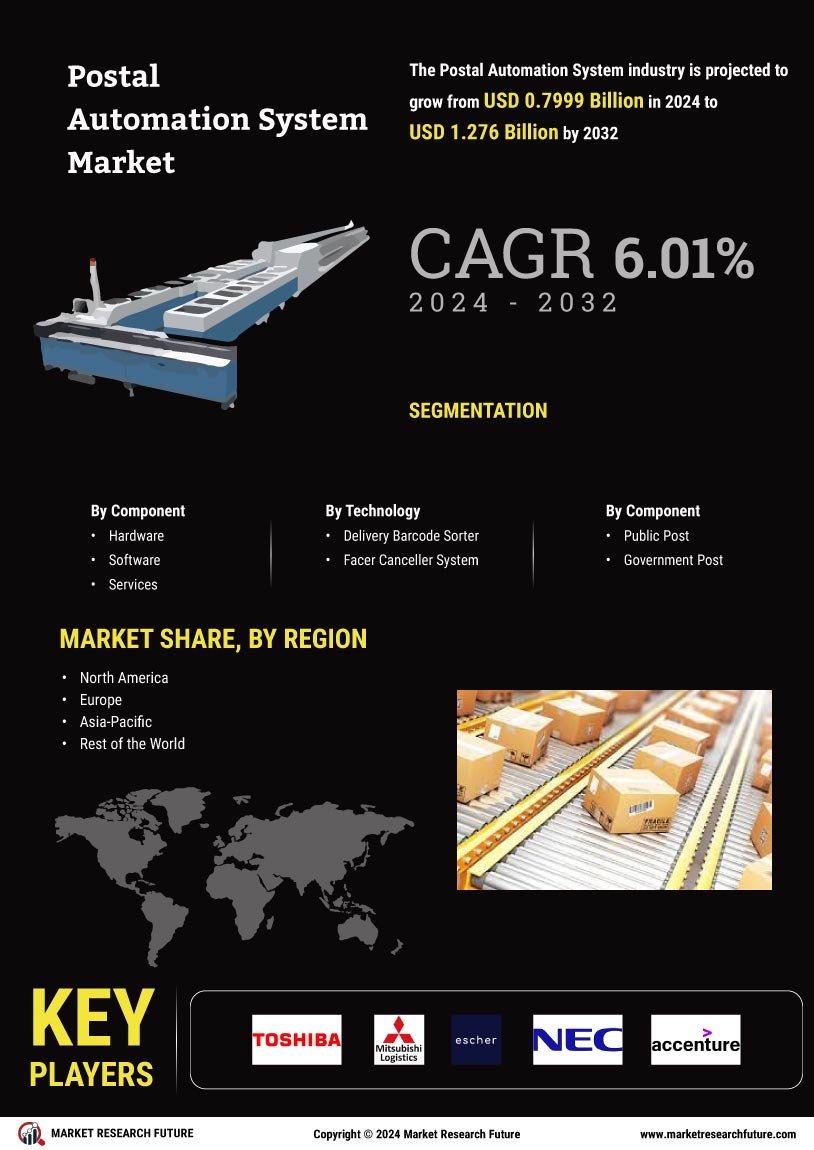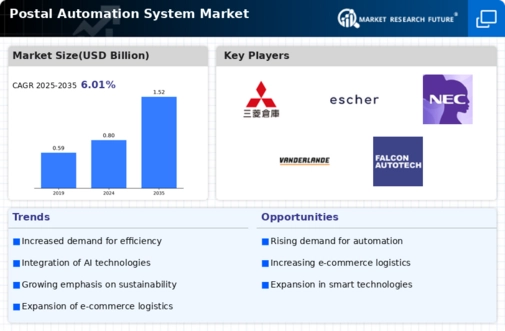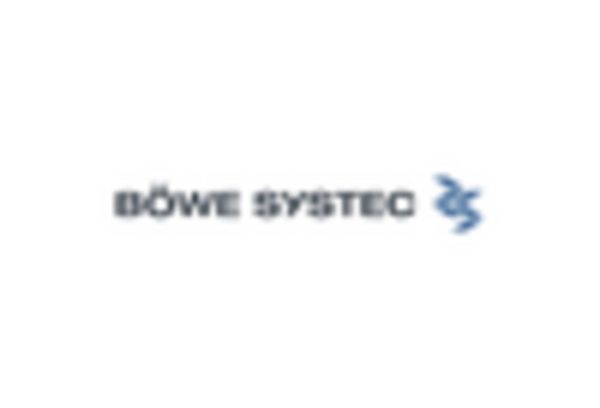The Postal Automation System Market is currently characterized by a dynamic competitive landscape, driven by technological advancements and the increasing demand for efficiency in mail processing. Key players such as gad_source=1&;gad_campaignid=2047753585&gbraid=0AAAAADEuPPPVPNWP6xe_vnqK20YJJ5IBF&gclid=Cj0KCQjwvJHIBhCgARIsAEQnWlAid2lUcDmULz7PE87nq-KLcHuWgx5ST0FFcSrv_ZqdU20g-Y8uyJkaAk8MEALw_wcB">Siemens (Germany), Pitney Bowes (US), and BÖWE SYSTEC (Germany) are at the forefront, each adopting distinct strategies to enhance their market positioning. Siemens (Germany) focuses on innovation through the integration of AI and machine learning into their automation systems, aiming to streamline operations and reduce costs. Meanwhile, Pitney Bowes (US) emphasizes digital transformation, leveraging cloud-based solutions to improve customer engagement and operational efficiency. BÖWE SYSTEC (Germany) is pursuing regional expansion, particularly in emerging markets, to capitalize on the growing demand for automated postal solutions. Collectively, these strategies contribute to a competitive environment that is increasingly centered around technological innovation and customer-centric solutions.
In terms of business tactics, companies are localizing manufacturing and optimizing supply chains to enhance responsiveness to market demands. The Postal Automation System Market appears moderately fragmented, with several key players exerting influence over various segments. This fragmentation allows for niche players to thrive, while larger companies leverage their resources to maintain competitive advantages. The collective influence of these key players shapes the market structure, fostering an environment where innovation and operational efficiency are paramount.
In August 2025, Siemens (Germany) announced the launch of a new AI-driven sorting system designed to enhance the speed and accuracy of mail processing. This strategic move is significant as it positions Siemens to meet the growing demands for faster delivery times, thereby reinforcing its competitive edge in the automation sector. The integration of AI not only streamlines operations but also reduces labor costs, which is crucial in a market that is increasingly focused on efficiency.
In September 2025, Pitney Bowes (US) unveiled a partnership with a leading logistics firm to enhance its cloud-based solutions for postal automation. This collaboration is indicative of Pitney Bowes' strategy to integrate advanced technology with logistics capabilities, thereby improving service delivery and customer satisfaction. Such partnerships are likely to enhance their market presence and provide a competitive advantage in an increasingly digital landscape.
In July 2025, BÖWE SYSTEC (Germany) expanded its operations into Southeast Asia, establishing a new manufacturing facility aimed at catering to the growing demand for postal automation in the region. This expansion reflects BÖWE SYSTEC's commitment to regional growth and its strategy to localize production, which may lead to reduced lead times and improved service levels in emerging markets.
As of October 2025, the Postal Automation System Market is witnessing trends such as digitalization, sustainability, and the integration of AI technologies. These trends are reshaping the competitive landscape, with companies increasingly forming strategic alliances to enhance their technological capabilities and market reach. The shift from price-based competition to a focus on innovation, technology, and supply chain reliability is becoming evident. Moving forward, competitive differentiation will likely hinge on the ability to innovate and adapt to changing market dynamics, positioning companies to thrive in an evolving landscape.

















Leave a Comment